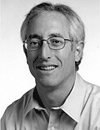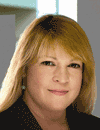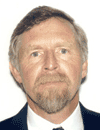
Monday, 24 January 201108:00 | Registration | 09:00 |  | Keynote Presentation Stem Cells and Neurodegenerative Disease
Lawrence Goldstein, Professor, University of California San Diego, United States of America
|
| |
Session: Latest Trends in Regenerative Medicine and Cellular Therapy |
| | 09:30 | Cell Tracking and Future Implications In Regenerative Medicine
Joseph Frank, Chief, National Institutes of Health, United States of America
Various imaging approaches are being used to monitor the migration of cells in regenerative medicine. | 10:00 | Vessel-derived Stem Cells for Therapy of Skeletal and Cardiac Muscle in Duchenne Muscular Dystrophy
Suzanne Berry, Assistant Profesor, University of Illinois Champaign Urbana, United States of America
Data will be presented demonstrating vessel-derived stem cell therapy for skeletal and cardiac muscle in animal models of muscular dystrophy. The stem cells regenerate skeletal muscle and engraft into cardiac muscle, restoring expression of dystrophin protein and improving heart function. | 10:30 | Coffee and Networking in Exhibition Hall | 11:15 | Human Mesenchymal Stromal Cell (hMSC) Spheroids Exhibit Enhanced Anti-inflammatory Properties
Joni Ylostalo, Senior Research Associate, Texas A&M Health Science Center, United States of America
The current work demonstrates how mesenchymal stromal cell (MSCs) spheroids are more effective than monolayer MSCs in reducing inflammation. In addition, spheroid MSCs are much smaller and can traffic through the lungs more efficiently than monolayer MSCs. | 11:45 | Use of Mesenchymal Stem Cells for Therapies in the Lung
Mauricio Rojas, Assistant Professor, Emory University, United States of America
We have demonstrated that MSC administration prevented Acute and Chronic Lung Injury in animal models. Protection against injury is associated with regulation of immune after injury. We hypothesize that MSC may also can be use on lung transplantation by ameliorating the development of obliterative bronchiolitis (OB) during chronic rejection. The studies were performed in the mouse heterotopic allogenic airway transplant model. We transplanted mouse tracheas into genetically different mice strains. Treatment with MSC significantly reduced the epithelial loss and luminal occlusion after transplant. We will discuss the mechanisms described to explain the mechanism of action and the implications to translate MSC therapy into clinic. | 12:15 | Lunch and Networking in Exhibition Hall | 13:00 | Poster Viewing | 14:00 | Circulating Tumor Cells and Cancer Stem Cells (CSCs) Market Analysis
Stefan Jellbauer, Postdoctoral Scholar, University of California, Irvine, United Kingdom
| 14:30 | Market Trends in Stem Cell Research and Cellular Therapy: Qualitative and Quantitative Analysis
Enal Razvi, Managing Director, Select Biosciences Inc, United States of America
| |
Session: Cord Blood and Stem Cell Banking |
| | 15:00 | Stem Cell Banking: Between Traceability and Identifiability
Rosario Isasi, Research Associate, McGill University, Canada
| 15:30 | Coffee and Networking in Exhibition Hall | 16:15 | Biobanking: Regulatory Requirements for Cord Blood and Tissues
Mary-Beth Fisk, President & COO, South Texas Blood and Tissue Center, United States of America
In this talk the speaker will describe the regulatory requirements for banking cells and tissues in the United States. From Good Tissue Practices to licensure requirements will be outlined. | 16:45 | Development of Human Embryonic Stem Cell Therapy For Stroke
Marcel Daadi, Director, Stanford University, United States of America
Our progress in developing therapeutic human neural stem cell products and in understanding the cellular and molecular control of their derivation from human embryonic stem cells will be reported. Data will be presented on preclinical development, in vivo molecular imaging and how grafted neural stem cells rescue neurological deficits in experimental stroke animal models. | 17:15 | Panel Discussion: Legal Trends in the Stem Cell Field
This panel will focus on the legal and IP trends in the stem cell arena in the US and Europe.
Patent Perspectives in Stem Cells
Matthew Hinsch, Partner, Kilpatrick Townsend
Trends for Stem Cells Law across the European Union & Legal Opportunities for International Stem Cell Research Projects with German based Researchers
Timo Faltus, Legal Researcher, Leipzig University
Stem cell and reproductive medicine law across the member states of the European Union, especially in Germany is changing. The presentation will give a comprehensive overview on current trends these research fields. | 18:00 | End of Day One |
Tuesday, 25 January 201108:30 |  | Keynote Presentation Mesenchymal Stem Cells for the Treatment of Huntington's Disease
Jan Nolta, Professor/Director, University of California Davis, United States of America
Mesenchymal stem cells/marrow stromal cells (MSC) present a promising tool for cell therapy, and are currently being tested in FDA-approved clinical trials for various disorders. The current data in support of applying MSC-based cellular therapies to the treatment of Huntington's disease and other neurodegenerative disorders will be discussed. |
| |
Session: Stem Cell Utilization in Drug Discovery & Development |
| | 09:30 | High Content Assay Strategies to Screen iPS Cells with no Screenable Phenotype
Hakim Djaballah, CEO, Institute Pasteur - Korea, Korea South
We have successfully implemented a novel assay strategy to screen iPS cells where there is no obvious phenotype that can be measured using conventional HTS detection methodologies. The assay was developed in 384-well plates and makes use of an unusual readout technology for HTS. The assay was validated in a pilot screen against a library of 6,000 compounds. I will present some data on this novel way to screen iPS cells and discuss its merits for drug discovery and geno-toxicity assessment. | 10:00 | Coffee and Networking in Exhibition Hall | 10:45 | Epithelial-to-mesenchymal Transition Leads to the Acquisition of Cancer Stem Cell Characteristics in Liver Cancer
Bart Rountree, Assistant Professor, Penn State College of Medicine, United States of America
Metastatic disease and chemotherapy resistance are the two primary causes of treatment failures for cancer. Within liver cancer, we have linked these two important aspects through Snail, a transcription factor that drives epithelial-to-mesenchymal transition. | |
Session: ESCs, Induced Pluripotent Cells (iPSC), and their Potential Applications |
| | 11:15 | Insights on Primate Evolution Using Induced Pluripotent Stem Cells (iPSC)
Maria-Carolina Marchetto, Research Associate, Salk Institute for Biological Studies, United States of America
In this study, we generated induced pluripotent stem cells (iPSC) from humans and from our closest relatives: bonobos and chimpanzees. Studying the behavior of live neurons from humans and apes could bring insights on important aspects of primate evolution. | 11:45 | Genetic Manipulation of Human Embryonic Stem Cells and Their Neuronal Progenies using Baculoviral Vectors
Jieming Zeng, Research Scientist, Institute of Bioengineering and Nanotechnology, Singapore
To realize the potentials of human embryonic stem (hES) cells in regenerative medicine, effective genetic manipulation in hES cells and their progenies is an obvious demand. Our study demonstrates that baculoviral vectors can provide an efficient tool for this purpose. | 12:15 | Technology Spotlight | 12:30 | Lunch and Networking in Exhibition Hall | 13:30 | Poster Viewing | 14:00 |  | Keynote Presentation Making Stem Cells Retinal and Vice Versa: Cellular Therapy for Eye Disease
Dennis Clegg, Professor, University of California Santa Barbara, United States of America
Pluripotent stem cells can differentiate into ocular cells, including retinal pigmented epithelial cells, which are candidates for cellular therapy in the treatment of age-related macular degeneration. |
| 14:30 | Assessment of the Mechanism of Cytotoxicity Using iPS Cardiomyocytes and Bioluminescent Assays
Jeff Kelly, Manager Cell Systems, Promega, United States of America
The combined use of iPS-derived cardiomyocytes and bioluminescent assays for viability, apoptosis, oxidative stress, HDAC state and proteasome function offer an ideal mammalian cell model for the sensitive analysis of multiple mechanisms of cytotoxicity will be discussed. | 15:00 | Modeling Autism Spectrum Disorders with Stem Cells
Alysson Muotri, Professor, Director of the Stem Cell Program, University of California-San Diego, United States of America
The speaker will present a human model using reprogrammed pluripotent stem cells from patients suffering from autism spectrum disorders and differentiated into functional neurons. | 15:30 | Coffee and Networking in Exhibition Hall | 16:00 | Chemically induced Pluripotent Stem Cells (CiPSCTM) for Practical, Safe, Clinical Translation of Human iPS Technology
Babak Esmaeli-Azad, President/CEO, DNAmicroarray, Inc., United States of America
DNAmicroarray, Inc. has developed a robust iPS methodology termed “Chemically induced Pluripotent Stem Cells” (CiPSCTM, patent pending) that uses a cocktail of small molecule inducers. CiPSC eliminates the need for any exogenous gene transduction and generates fully reprogrammed cells with high levels of efficiency. In addition, CiPSC uses non-invasive samples (e.g. skin biopsies) to derive personalized pluripotent stem cells without abnormal or permanent modifications to the cellular and molecular machinery. | 16:30 | Close of Conference |
|

 Add to Calendar ▼2011-01-24 00:00:002011-01-25 00:00:00Europe/LondonStem Cells World CongressStem Cells World Congress in San DiegoSan DiegoSELECTBIOenquiries@selectbiosciences.com
Add to Calendar ▼2011-01-24 00:00:002011-01-25 00:00:00Europe/LondonStem Cells World CongressStem Cells World Congress in San DiegoSan DiegoSELECTBIOenquiries@selectbiosciences.com